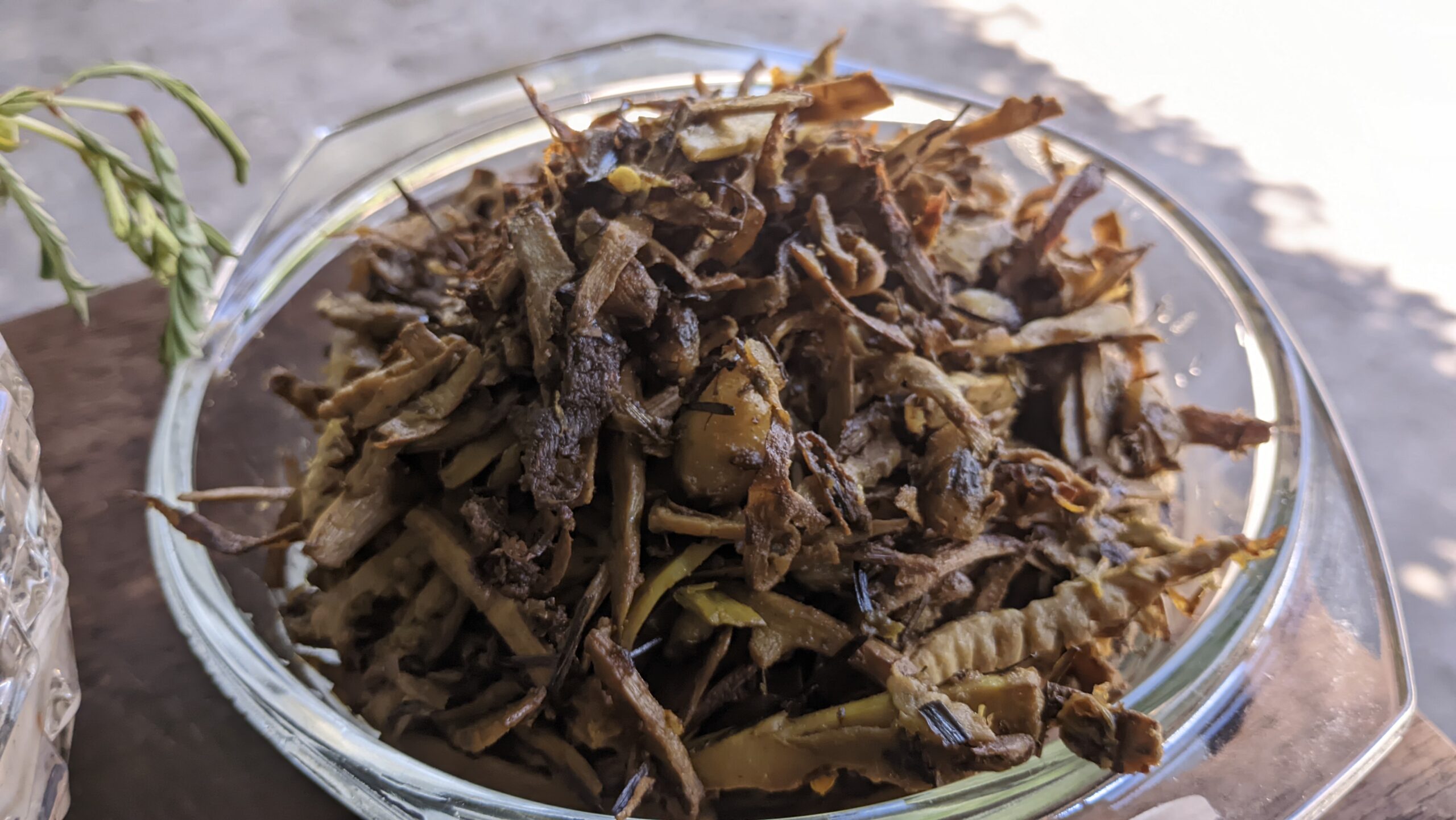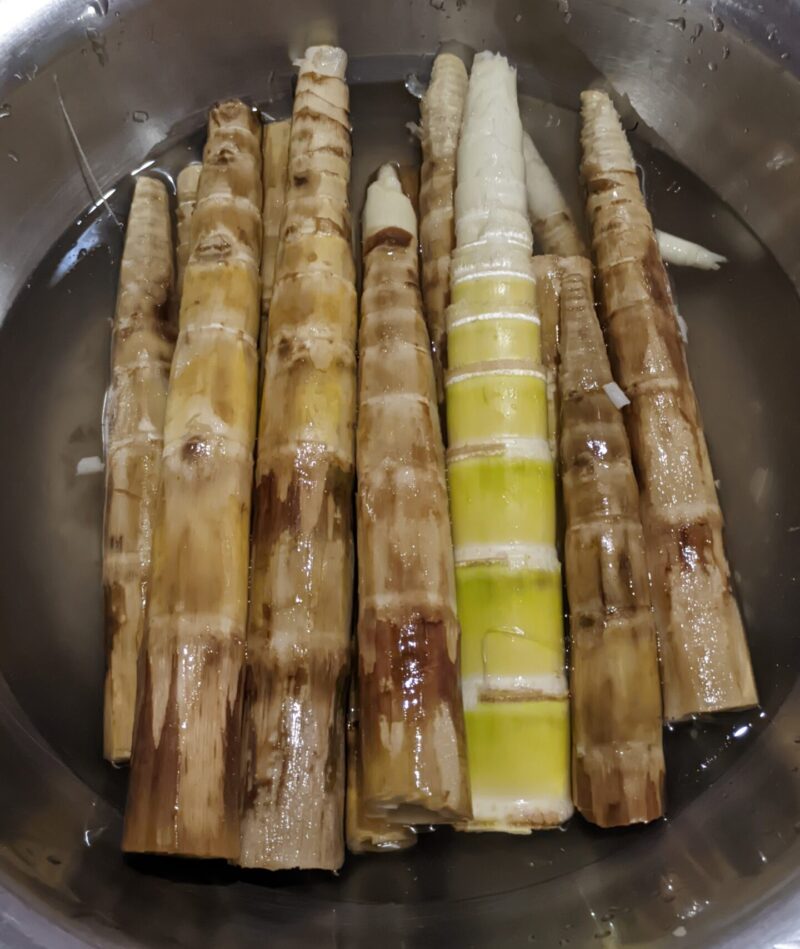
Laiwa Kanghou is one of those dishes that is common in many kitchens but surprisingly just not very familiar to many households. Even in our house, we discovered it only when I was late in my teens. Nobody in my house had ever cooked it before that.
But when I finally did, the dish went straight up to my top three dishes of Manipuri cuisine. It is a very simple preparation. The key ingredient is patience. It has to be cooked slowly until the shoots reveal all the hidden flavours they hold.
| Laiwa (fresh bamboo shoot) | 8-10 shoots |
|---|---|
| Potatoes | 1 big or 2 medium |
| Maroi Nakuppi (a kind of chives) | A handful |
| Green chillies | 3-4 nos |
| Mustard oil | 4 tablespoons |
| Salt | To taste |
| Ginger | Half an inch |
| Turmeric (optional) | A pinch |
| Patience | Dollops and dollops |
What You Will Need
Wash and peel the potatoes. Cut them into 1-cm cubes.
Peel the hard layers of the laiwa, or fresh bamboo shoot; chop off the base if it is dirty or woody like (should be soft enough for a small kitchen knife to cut through smoothly).

Cut the shoots into fine strips, to a thickness of about 1mm.
Wash and chop the maroi nakuppi, a kind of chives.
Cut the green chillies into half, longitudinally.
Crush the ginger and keep ready.
A wok or pan with a cover, a spatula, and other ingredients found in most kitchens will help.
Instructions
Heat oil in a wok or pan, and fry the nakuppi until almost dry. You can stop when it gives off the typical maroi nakuppi aroma, visually like fried onion does.
Add the green chillies, just about 30 seconds before adding the laiwa.
Add the chopped laiwa, potatoes, and salt to taste. Keep on high flame, and cover for about 3-4 minutes. Ensure you keep stirring from time to time to prevent burning.
Add crushed ginger to the mix.
Take off the cover, lower the flame, and slowly cook until the laiwa is soft. Ensure it no longer feels or tastes raw. Keep stirring to avoid burning.
Add a pinch of turmeric if you wish, in the last 2-3 minutes.
Notes
Mustard oil can be substituted with any refined oil for this preparation.
Served with hot steam rice and paan eeromba, this makes for a wholesome monsoon meal.
Ammo Angom is the founder of Living Manipur, living a dream journey to reconnect with his roots in Manipur, its people, and the land. Living Manipur curates travel experiences for the socially conscious adventurers to discover and experience Manipur.
You must be logged in to rate this recipe.

Sign in with email

